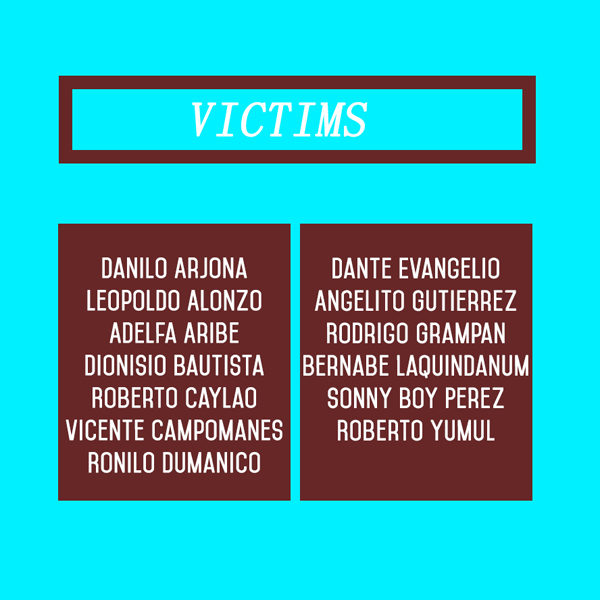Filtered By: Topstories
News
The Mendiola Massacre case: No charges filed after 28 years
By ELIZABETH MARCELO, GMA News
It has been 28 years since 13 farmers seeking genuine agrarian reform died in a bloody march dispersal by allegedly perpetrated by government authorities.
Now referred to as the Mendiola Massacre and sometimes called the “Black Thursday”, the incident happened under the term of the late Corazon Aquino, mother of the current President Benigno Aquino III.
Now referred to as the Mendiola Massacre and sometimes called the “Black Thursday”, the incident happened under the term of the late Corazon Aquino, mother of the current President Benigno Aquino III.
None has been indicted for the incident after the Manila Regional Trial Court, in 1988, dismissed the class suit filed by the families of the victims against several government officials for lack of evidence. The decision was upheld by the Supreme Court in 1993.
In 2011, various peasant groups urged Justice Secretary Leila De Lima to reopen the case. De Lima responded by forwarding the case to the DOJ's task force extrajudicial killings, but up to now, no development concerning the case has been reported.
In Malacañang on Thursday, Communications Secretary Herminio Coloma Jr. said it was “unreasonable” to seek justice from the Aquino administration for an incident that happened 28 years ago.
In Malacañang on Thursday, Communications Secretary Herminio Coloma Jr. said it was “unreasonable” to seek justice from the Aquino administration for an incident that happened 28 years ago.
“Baka naman hindi angkop o hindi napapanahon na ihahain pa ‘yan sa pintuan ng kasalukuyang administrasyon, samantalang batid naman ng lahat na hindi naman ito nangyari ngayon lang,” Coloma told reporters.
The incident which happened on a Thursday of January 22, 1987 at Mendiola Bridge in Manila is considered as the bloodiest protest incident in the Philippine history.

Look back at the events that led to the bloody incident nearly three decades ago:
January 15-21, 1987: Members of Kilusang Magbubukid ng Pilipinas (KMP) camped out at the Ministry of Agrarian Reform (now Department of Agrarian Reform) along Elliptical Road in Diliman, Quezon City. The farmers and their sympathizers aired their plights such as poor wages, inhumane working conditions and lack of land ownership despite tilling the lands for several years. The group demanded genuine agrarian reform. Dialogues were held between the farmers, represented by KMP national president Jaime Tadeo, and the government, represented by then Minister Heherson Alvarez.
January 21, 1987: The farmers set up a barricade at the MAR premises and prevented the employees from going to their offices. In a meeting later that day, Alvarez advised Tadeo to wait for the ratification of the 1987 Constitution and to let the government implement its comprehensive land reform program. Tadeo did not accept Alvarez's advice, arguing that there is no hope for genuine land reform under a landlord-controlled Congress. Alvarez, after a heated discussion with Tadeo, suggested that they assemble a negotiating panel and just meet again the following day.
January 22, 1987 - Mendiola Massacre
Tadeo's group decided to march to Malacañang instead of attending yet another dialogue with agrarian reform officials. Other sectoral organizations such as the Kilusang Mayo Uno, Bagong Alyansang Makabayan, and League of Filipino Students joined them along the way.
From Quezon Memorial Circle, they proceeded to Liwasang Bonifacio and held a brief program. Meanwhile, civil disturbance control units under the command of Capital Regional Command Commander Gen. Ramon Montaño, Task Force Nazareno commander Col. Cesar Nazareno and Western Police District Chief Police Brig. Gen. Alfredo Lim were deployed in the vicinity of Malacañang.
They marchers numbered about 10,000-15,000 by the time they reached C.M. Recto Avenue that afternoon. They breached police lines, clashing against police and military personnel. The protesters' steel bars, wooden clubs and lead pipes came to blows with the authorities' shields and truncheons. Gunshots were fired, even after the demonstrators began to retreat.

—NB/KBK, GMA News
Tags: mendiolamassacre
More Videos
Most Popular



